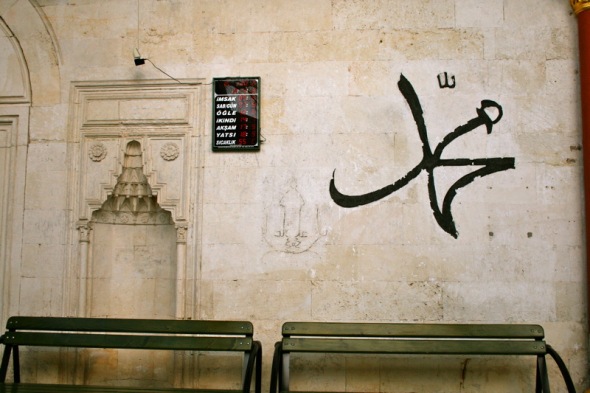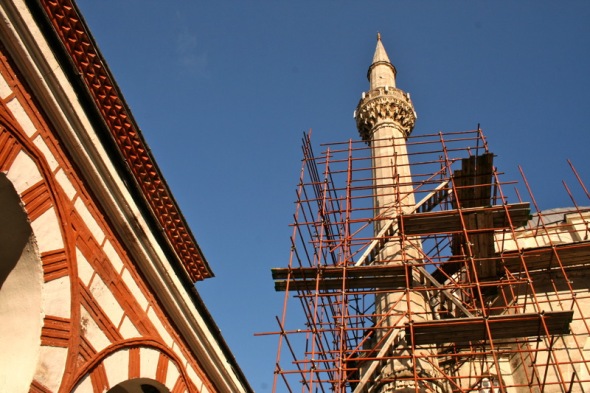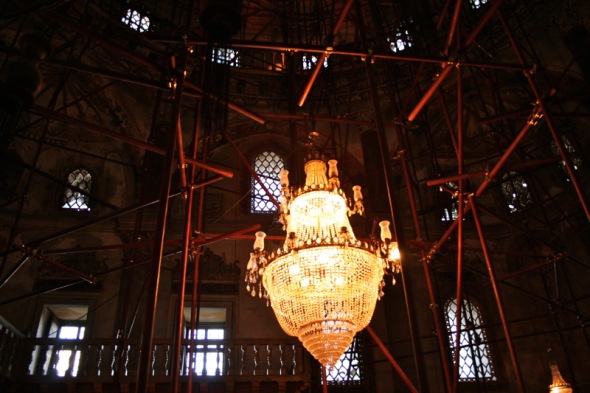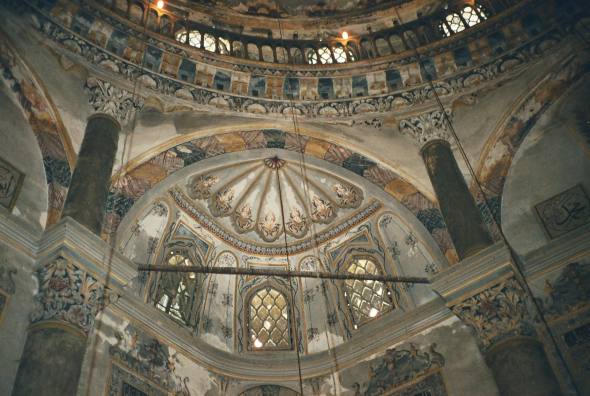As mentioned in my last post, I took an afternoon trip to Shumen (Шумен), a small city about 80 km west of Varna. In 1388 Sultan Murad I forced the city to surrender to the Ottoman Empire–soon after Władysław Warneńczyk’s unsuccessful crusade against the Ottomans in 1444, the city was destroyed by the Ottomans and moved to its present location. It was known by the Ottomans at that time as Şumnu. A mosque still remains there today, the largest in Bulgaria and one of the largest in the Balkan region: the Şerif Halil Paşa Cami, also known as the Tombul Mosque.
According to Wikipedia, the mosque was built between 1740 and 1744 and “was initially located in the northeastern Bulgarian (then Ottoman) town’s centre, but is now in Shumen’s southwest parts as the town centre shifted.” The mosque’s name (tombul) comes from the shape of its dome.
I spoke with a man who opened the mosque for me (but only after some convincing in American-accented Turkish). He was eager to tell me anything I wanted to know–this is, in fact, one of only three mosques that remain in Bulgaria today and this is by far the largest out of that group, he said. The building itself was financed by Sherif Hilal Pasha, who was born around 17 km away from the current town of Shumen. After becoming pasha, he had decided to return to Shumen and devote a mosque to the memory of his father.
The mosque is more characteristic of the Ottoman “tulip period” of the 1700s, which contains aesthetic elements of the Central European baroque style. It also functioned as a prominent intellectual and cultural center, with a library, medrese school, and primary school for community members.
Still functioning today, this mosque serves as a community and religious center for some members of the Turkish minority living in eastern Bulgaria today. I came across many pamphlets and magazines (all in Turkish and Bulgarian) that introduced people to the center they’ve developed here (which now sports a modest café). Muslim community activities happen here from time to time, at least from what I could understand by reading what had been given to me.
I asked the man if many people still come here, especially since many ethnic Turks had left for their “home country” before the Bulgarian Revolution of 1989–during which a forced assimilation campaign against the ethnic Turkish minority was underway, forbidding them to speak the Turkish language and forcing them to adopt Bulgarian names (later, 300,000 Turks were expelled from the country, causing a significant drop in agricultural production in the southern regions due to such a significant drop in labor and human capital). He said there are still a few dozen families that come here regularly but not as much as before.





















